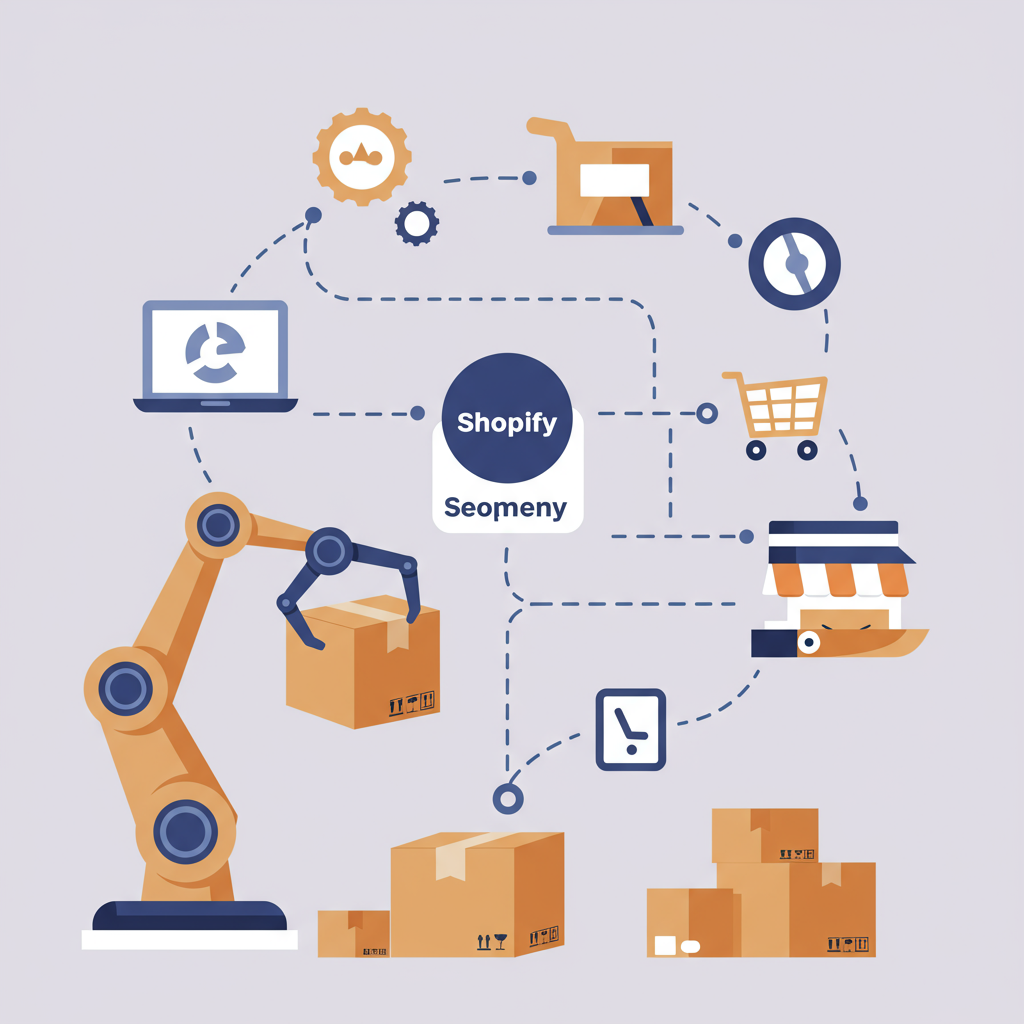Discover how to transform your e-commerce business by automating key aspects of your Shopify fulfillment process, saving time, reducing costs, and delighting your customers.
As a Shopify merchant, you know that managing orders, inventory, and shipping can quickly become overwhelming, especially as your business grows.
The daily grind of manual fulfillment tasks can eat into your valuable time, diverting focus from strategic growth initiatives like marketing and product development.
That’s why I’m here to share my insights on how to effectively automate fulfillment in Shopify, transforming your operational efficiency and freeing you up to scale.
Automating your fulfillment process isn’t just about saving time; it’s about reducing errors, improving customer satisfaction, and ultimately, boosting your bottom line.
Imagine a world where orders are processed, shipping labels are generated, and tracking information is sent to customers, all without you lifting a finger. This isn’t a dream; it’s achievable.
The core idea behind fulfillment automation is to leverage technology to handle repetitive, rule-based tasks that are typically part of your order-to-delivery cycle.
This includes everything from the moment a customer clicks “buy” to the instant their package arrives at their doorstep.
One of the first areas to consider for automation is order processing itself. When an order comes in, do you manually update spreadsheets or transfer data?
Shopify’s native capabilities already handle a lot of this, but integrating with other systems can further streamline the flow.
For instance, connecting your Shopify store directly to your inventory management system ensures real-time stock updates, preventing overselling and backorders.
This integration can automatically deduct items from stock as soon as an order is placed, providing an accurate picture of your available inventory.
Another critical area is shipping label generation. Manually entering addresses and package details into a carrier’s portal is incredibly time-consuming and prone to human error.
Automation here means that once an order is paid, a shipping label is automatically created using the customer’s address and pre-defined package dimensions/weights.
Following label creation, the next logical step is automated tracking number updates. Customers expect to know where their package is at all times.
An automated system will instantly retrieve the tracking number from the carrier and push it back to Shopify, marking the order as fulfilled.
Crucially, this also triggers automated shipping confirmation emails to your customers, complete with their tracking link, enhancing their post-purchase experience.
Beyond these core steps, consider automating customer service inquiries related to order status. Many “where is my order?” questions can be answered by an automated system or a well-integrated FAQ.
Returns management can also benefit from automation. Setting up a clear, automated returns portal can guide customers through the process, reducing manual intervention.
So, what tools can help you achieve this level of automation? Shopify itself offers a robust foundation.
Its built-in order management and shipping profiles allow for basic automation, like setting up different shipping rates based on location or product weight.
However, for more advanced automation, you’ll likely turn to the vast ecosystem of Shopify Apps.
Apps specializing in fulfillment, inventory management, and shipping are designed to integrate seamlessly with your store.
Examples include apps that connect directly to major carriers, apps that manage dropshipping workflows, or comprehensive 3PL (Third-Party Logistics) integration apps.
For highly customized workflows, tools like Zapier or Make (formerly Integromat) can be invaluable. They allow you to connect Shopify with virtually any other web service, creating bespoke automation rules.
If you’re dealing with high volumes or complex logistics, partnering with a 3PL provider is a powerful form of automation. They handle storage, picking, packing, and shipping on your behalf.
When choosing a 3PL, ensure they have robust integration with Shopify, allowing for real-time data exchange and automated order forwarding.
For dropshippers, automation is even more critical. Apps like Oberlo (though now integrated into Shopify’s ecosystem) or DSers automate the process of importing products and fulfilling orders directly from suppliers.
My advice for getting started is to first assess your current fulfillment workflow. Map out every manual step you take from order placement to delivery.
Identify the biggest bottlenecks and the most time-consuming, repetitive tasks. These are your prime candidates for automation.
Next, research the Shopify Apps and 3PLs that best fit your specific needs and budget. Don’t just pick the cheapest; look for reliability, features, and good customer support.
Once you’ve chosen your tools, meticulously set up the integrations. This might involve connecting APIs, configuring rules, and testing every possible scenario.
Testing is paramount. Place test orders, simulate different shipping scenarios, and ensure all automated notifications are firing correctly.
After implementation, continuously monitor your automated workflows. Technology can sometimes glitch, or your business needs might evolve.
Be prepared to optimize and adjust your automation rules as you gather more data and your business scales.
The benefits of this effort are immense: significant time savings, reduced operational costs due to fewer errors and less manual labor, and improved order accuracy.
You’ll also experience enhanced scalability, as your automated system can handle increased order volumes without a proportional increase in manual effort.
Most importantly, your customers will benefit from faster, more reliable deliveries and proactive communication, leading to higher satisfaction and repeat business.
What are your thoughts on automating fulfillment for your Shopify store? Have you tried any of these strategies, or do you have other tips to share?
Embracing fulfillment automation is not just a luxury; it’s a necessity for any Shopify merchant looking to thrive in today’s competitive e-commerce landscape.
By investing in these systems, you’re not just streamlining operations; you’re investing in the future growth and success of your business.






